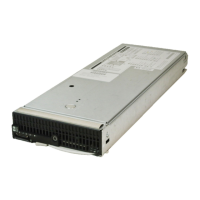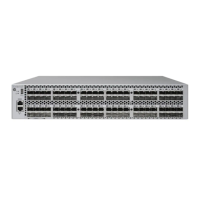You do not specify disk conversion during the RESTORE process; RESTORE automatically converts
the files if needed:
• When RESTORE converts files, it creates temporary disk files on the current subvolume which,
in the destination-file format, have names that begin with ZZRA. If you terminate the RESTORE
process early, the current subvolume might contain some of these files. To regain disk space,
purge any remaining ZZRA files. If disk space is inadequate, use the SCRATCHVOL option.
• You can use RESTORE to convert key-sequenced files. For DP2 files, index and data blocks
are the same size. When you convert a key-sequenced file from DP1 to DP2, RESTORE changes
the index-block size if it is not equal to the data-block size. RESTORE does not change the
block size for entry-sequenced or relative files.
• If RESTORE converts an entry-sequenced DP1 file that does not have a DP2-compatible block
size (for example, 1536, 2560, 3072, or 3584 bytes), the block size is rounded up to a
DP2-compatible size (2048 or 4096 bytes). This change causes record addresses to change
in the file. A warning message says that you must perform a FUP LOADALTFILE on all the
alternate-key files of this primary file.
• Key-sequenced files sometimes become larger during conversion. To avoid file-system error
45, use the EXT option to increase the destination file size.
Restoring From Labeled-Tapes
You can perform labeled-tape BACKUP and RESTORE processes using either file mode or volume
mode. BACKUP, RESTORE, and BACKCOPY send a labeled-tape request through a CLASS TAPE
DEFINE to the labeled-tape server process ($ZSVR). It passes messages about labeled-tape operations
to the operator console ($0) and the MEDIACOM console (if one exists).
Create the DEFINE the same way you create DEFINEs for ANSI and IBM labeled tapes. For
information on DEFINEs or labeled tape processing on NonStop systems, including instructions on
using DEFINEs and how to use the CLASS TAPE DEFINE for labeled tape processing, see the
Guardian User's Guide.
Unlike TAPE DEFINEs for ANSI and IBM tapes, you can use only a subset of the CLASS TAPE
attributes for a RESTORE process. For a summary of supported attributes, see Table 19. For a
complete description of the DEFINE attributes, see Appendix E: CLASS TAPE DEFINEs.
You can specify the same DEFINE attributes for both a labeled-tape RESTORE and labeled-tape
BACKUP process. However, the only attributes used are displayed in Table 19. The other tape
attributes in the DEFINE are ignored. This lets you use the same DEFINE for a labeled tape BACKUP
process and a subsequent labeled-tape RESTORE process without having to redefine the tape
attributes.
Table 19 DEFINE Attributes Used With RESTORE
DescriptionUseAttribute
Specifies the tape drive to useOptionalDEVICE
Specifies the name of the tape set (file) and must match FILEID on the tape labelOptionalFILEID
Indicates that this file is part of a generation group and must match GEN value
on the tape label
OptionalGEN
Must be specified as BACKUP, IBMBACKUP, or BYPASSRequiredLABELS
Specifies a comment message to be displayed to the operatorOptionalMOUNTMSG
Specifies the node (system) where all tapes must be mountedOptionalSYSTEM
Specifies a version within one generation and must match VERSION number
on the tape label
OptionalVERSION
Specifies the volume ID of the tapeSee NoteVOLUME
RESTORE Guidelines and Examples 175

